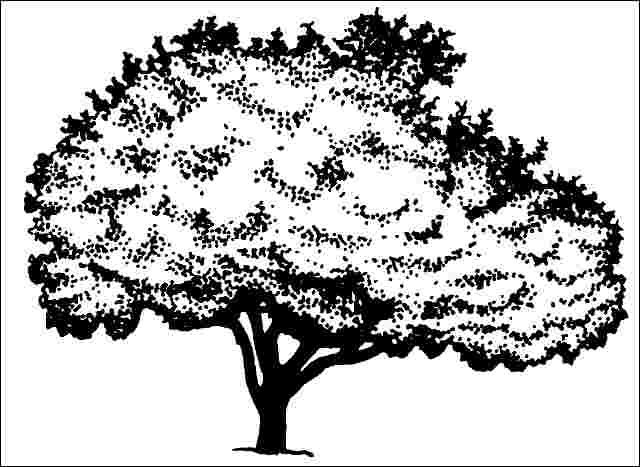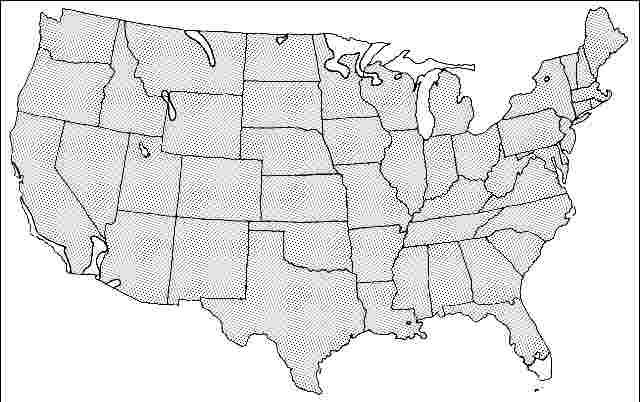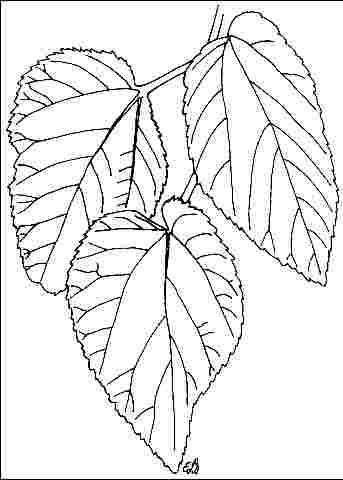Introduction
This group of mulberries is fruitless, a definite plus when compared to the mess created by the abundant fruits of the common white mulberry. The plant quickly forms a dark green mass of foliage from a short trunk, or group of trunks. This gives many people reason to plant the tree. However, it is quite sensitive to ice damage, has invasive surface roots and drops leaves in summer.

General Information
Scientific name: Morus alba
Pronunciation: MOE-russ AL-buh
Common name(s): White mulberry
Family: Moraceae
USDA hardiness zones: 3B through 9B (Fig. 2)
Origin: not native to North America
Invasive potential: little invasive potential
Uses: shade; specimen; bonsai
Availability: somewhat available, may have to go out of the region to find the tree

Description
Height: 20 to 30 feet
Spread: 30 to 45 feet
Crown uniformity: irregular
Crown shape: round, spreading
Crown density: dense
Growth rate: fast
Texture: coarse
Foliage
Leaf arrangement: alternate (Fig. 3)
Leaf type: simple
Leaf margin: lobed, serrate, dentate
Leaf shape: ovate
Leaf venation: pinnate
Leaf type and persistence: deciduous
Leaf blade length: 2 to 4 inches, 4 to 8 inches
Leaf color: green
Fall color: yellow
Fall characteristic: showy

Flower
Flower color: green
Flower characteristics: not showy
Fruit
Fruit shape: no fruit
Fruit length: no fruit
Fruit covering: no fruit
Fruit color: no fruit
Fruit characteristics: no fruit
Trunk and Branches
Trunk/bark/branches: branches droop; showy; typically one trunk; thorns
Pruning requirement: needed for strong structure
Breakage: susceptible to breakage
Current year twig color: green, gray
Current year twig thickness: thin
Wood specific gravity: unknown
Culture
Light requirement: full sun, partial sun, or partial shade
Soil tolerances: clay; sand; loam; acidic; alkaline; extended flooding; well-drained
Drought tolerance: high
Aerosol salt tolerance: unknown
Other
Roots: not a problem
Winter interest: no
Outstanding tree: no
Ozone sensitivity: sensitive
Verticillium wilt susceptibility: resistant
Pest resistance: resistant to pests/diseases
Use and Management
Fruitless white mulberry should be grown in full sun or partial shade on any well-drained soil. Although it is tolerant of air pollution and dry conditions, the tree will perform its best on moist soils. Leaves often drop in dry weather.
The species is invasive and gruits cause a mess on walks and driveways. For this reason, only fruitless cultivars are recommended.
Propagation is by cuttings or grafts.
Fruitless cultivars include 'Bellaire', 'Chaparral', 'Hempton', 'Stribling', and 'Urban'.
Pests
Pests are scale and mites.
Diseases
Leaf spot, bacterial blight, powdery mildew, and cankers may infect this tree.
